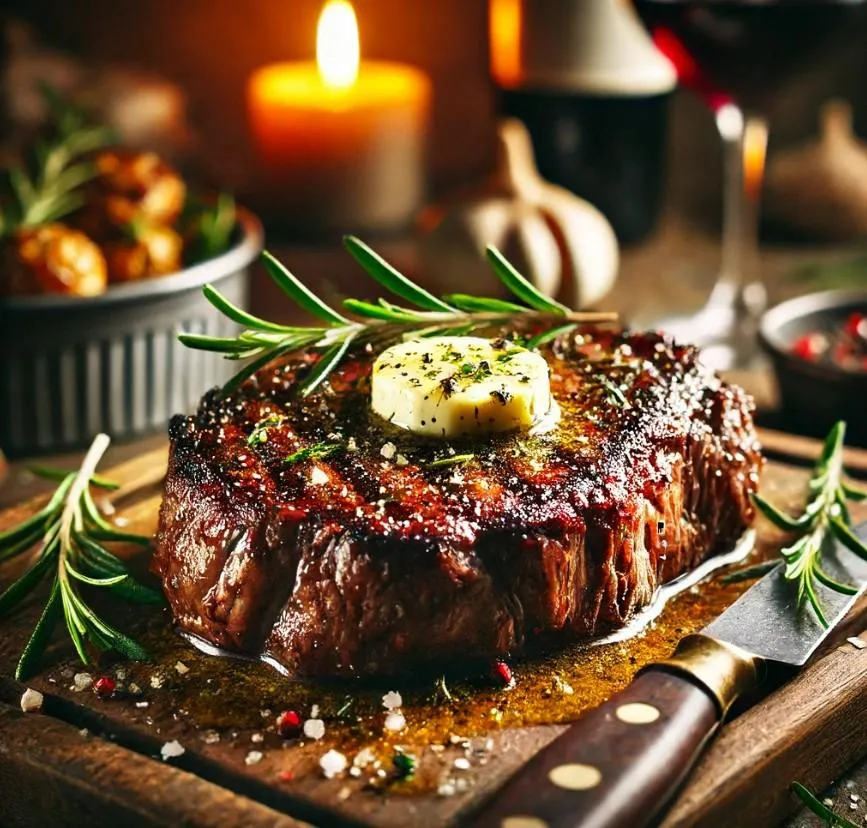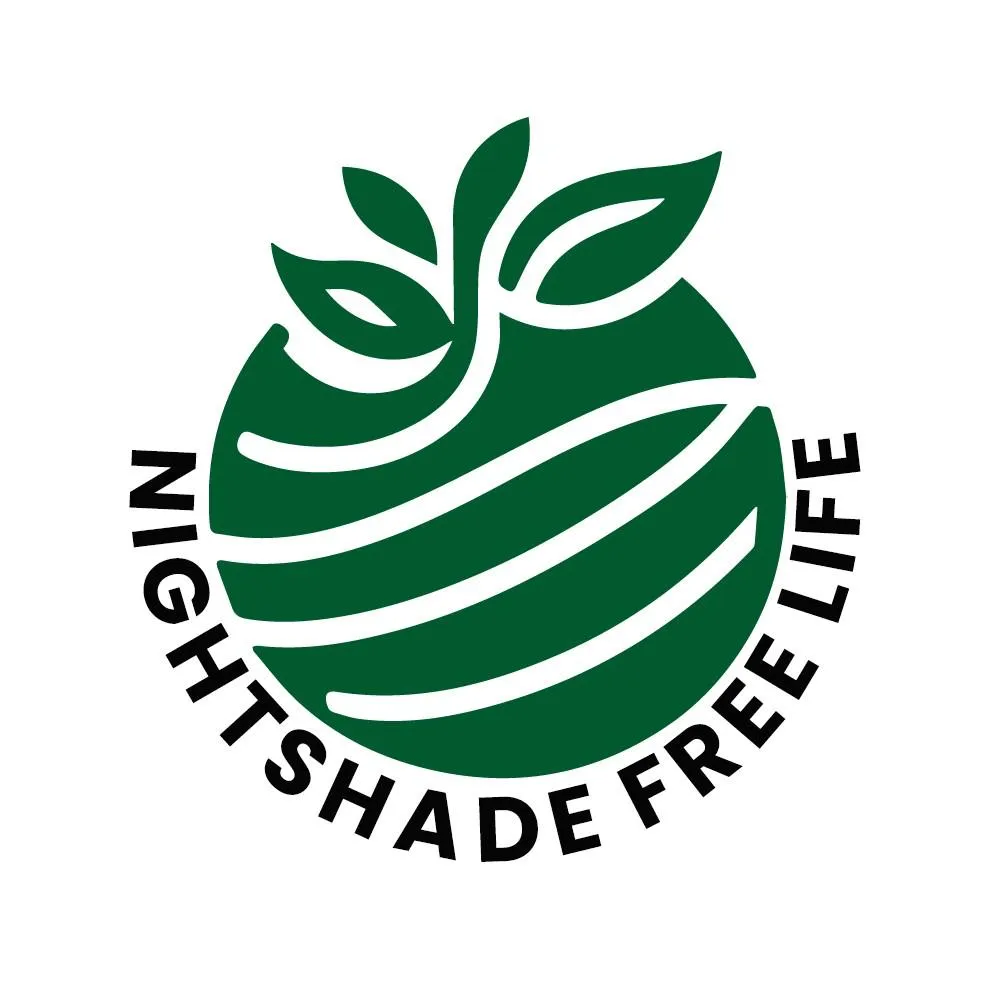Cooking techniques:
Sear and deglaze
Use heat to dial up
the flavour!
Searing meat and deglazing sounds complicated - but this is an easy technique that can add buckets of flavour to your
nightshade-free dish.

Colour equals flavour
Imagine two different steaks (or other kinds of protein, if you prefer).
One is the colour you'd get if you boiled the steak. Sure, it's cooked, but it's also kind of grey.
The other has a much darker, crispy crust all over. It's not burnt, it's just beautifully seared.
Which would you rather eat?
Searing is an excellent technqiue to create flavour by introducing a scientific process called the Maillard reaction.
The Maillard Reaction: How Searing Builds Flavor
When you sear food, especially meat, in a hot pan, you’re triggering the Maillard reaction - a chemical process. This reaction is the key to creating the deep, complex flavours that make seared dishes so irresistibly tasty.
It occurs when the amino acids (from proteins) and sugars that are a natural part of your ingredients react at high temperatures, typically around 140–165°C (285–330°F). This reaction creates new compounds that contribute to the browned crust and rich flavours
we love in seared food.
The Maillard reaction is responsible for those crispy, golden-brown surfaces, and it’s what turns a plain piece of meat or vegetable into something that tastes incredible.
Why Does This Matter for Your Cooking?
Searing isn’t just about colour. It’s about building a depth of flavour that can’t be achieved by other types of cooking. The compounds formed during the Maillard reaction have a complex, savoury taste —think of the rich, caramelised notes you get from a well-seared steak or a golden-brown roasted vegetable.
Tips for searing
First, you need a hot surface. Pre-heat your pan or grill to a high temperature well before you introduce the food, and use oil with a high smoke point so it doesn't burn (grapeseed, avocado, canola, sunflower, peanut etc - do not use extra virgin olive oil or butter).
Second, wet things don't sear. Pat the ingredients dry with paper towel before searing - the dryer, the better. Seasoning with salt and pepper before searing can also dry out proteins a bit for an even better sear.
Third, sear it carefully. This isn't a technique you can put on the cooktop and leave; use tongs and ensure every surface has its time in the hot pan.
Fourth, depending on how much the ingredient needs to be cooked, consider how to finish the cooking process. For example, scallops only need to be seared for a bit and they're done. A large steak may need to be finished in the oven. Some dishes can be seared on the outside, then finished in a sauce (this is how I like to make meatballs - delicious!). Searing uses really high temperatures, so the outside cooks very fast, and the inside may need longer.
Deglazing: Turning the flavour of seared food into the base for delicious sauces
So, the searing is done and you have a pan full of crispy bits. Time to wash up?
NO! Those are the tastiest parts! You can now use those Maillaird-blessed bits leftover from searing to create a delicious sauce.
Deglazing means adding a liquid such as stock, wine, vinegar, or even water to the hot pan after you’ve finished searing. As the liquid evaporates, it picks up the rich, deep flavours from the pan to create the base for your sauce. The result is a complex, well-rounded sauce that has all the depth of the seared ingredient.
Why is Deglazing Important?
Deglazing is a key step in making pan sauces, which are often the finishing touch for a dish. The sauce you create from deglazing will have an umami-packed complexity that you just can’t achieve with a store-bought sauce.
Once you've let the liquid reduce, you can add other ingredients like vegetables or mushrooms, then finish it off by straining it, adding cream, spices or herbs, or simply seasoning and serving it over the seared ingredient. It don't take long and isn't complicated - you're using the same pan to create a highly complimentary sauce for your seared item.
Bringing it together: Seared meat with pan sauce
Here’s how to sear and deglaze:
Pat the meat dry and season it with salt (feel free to add pepper, garlic powder or other things if you like, but don't skimp on the salt).
Heat a pan until hot. Add oil, let it heat, then add the meat.
Give it time to caramelise - it’ll be golden brown and have a bit of a crust. Flip over, brown, then sear the edges as well if it’s a thick item like a steak.
Remove the meat from the pan. If the inside needs to cook more, put it in a hot oven until the internal temperature is as needed (do an online search to check, it depends on the meat), then rest.
The pan should have some brown (not burnt!) bits stuck to it. Pour in a small amount of liquid - about half a cup of wine, stock or other liquid works well.
Heat the liquid and use a wooden spoon to scrape the bits off the bottom. Allow it to thicken and reduce, and for the flavours to come together.
Add vegetables, mushrooms, herbs, cream or spices as desired. Taste and season with salt and pepper until it's just right. Pour it over the seared meat and serve. Delicious!
© Nightshade Free Life
